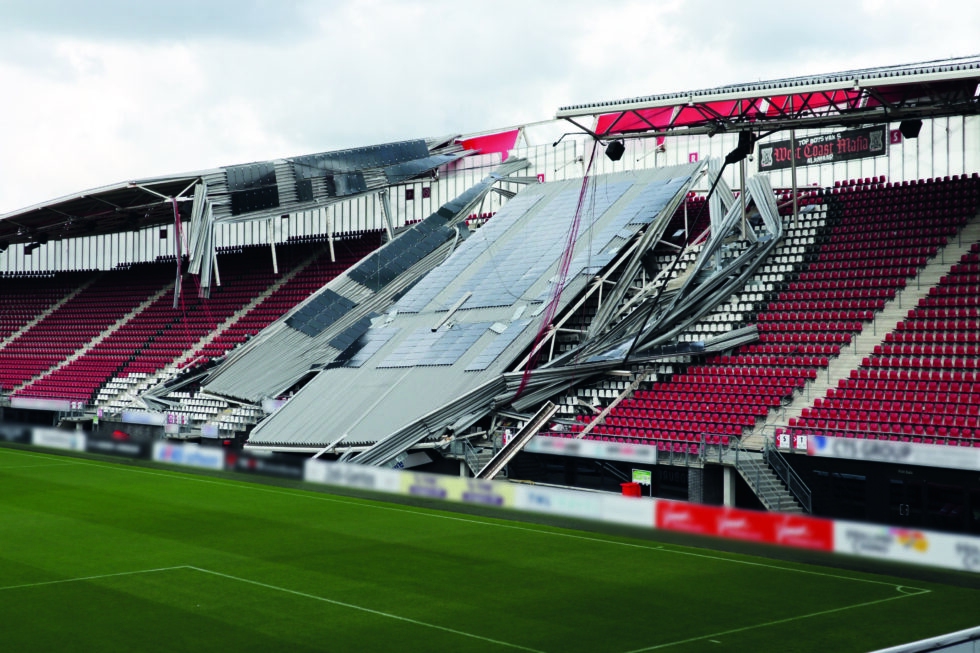
Dutch Safety Board recommends annual technical inspections for large public buildings
- Structural safety
Weakened welding joint
On Saturday, 10 August 2019, part of the grandstand roof of the AZ football stadium in the city of Alkmaar collapsed. At the time, the stadium had been in use for thirteen years. The Dutch Safety Board’s research shows that the steel roof construction did not meet the structural requirements when the stadium was completed. Within a few years, a crack appeared in one of the welding joints. During the time in which the stadium was in use, no thorough technical evaluations of the condition of the roof joints were conducted. As a result, it went unnoticed that one of the welding joints was growing increasingly weak. The roof eventually collapsed under a load which was far lower than the load which the structure was designed to withstand. During its investigation, the Dutch Safety Board therefore issued an interim warning for the welding joints in the remaining sections of the stadium’s roof in August of 2019.
Sixty incidents in 20 years
The investigation shows that the collapse at the AZ stadium is not an isolated incident. An inventory carried out by the Board has found that serious structural defects in more than 60 buildings have come to light over the past 20 years. This is not the Board’s first investigation as a result of an incident related to the construction industry: in 2017 it investigated the collapsed car park at Eindhoven Airport, in 2011 it looked into the collapsed roof of the Grolsch Veste stadium in Enschede and in 2010 it conducted an inquiry following the collapse of the concrete floor of B’Tower in Rotterdam. Following the investigation into the collapse of the car park in Eindhoven, the construction industry drew up an action plan to improve structural safety checks during the design and construction phases of buildings. However, once a building has been taken into use, such checks tend to fall by the wayside.
Responsibility
Building owners are responsible for the structural safety of their properties, but the law does not prescribe how this should be monitored. When a building is in active use, structural safety incidents can have major consequences for the people inside. Jeroen Dijsselbloem: “The users of a public building must be assured of the building’s safety and soundness. This requires building owners to be alert to the structural safety of their buildings.” That is why the Board recommends that the Minister of the Interior impose a legal obligation on owners of publicly accessible buildings to commission periodic structural safety inspections.
The full investigation page with the report, the recommendations, and the short video can be found here.
